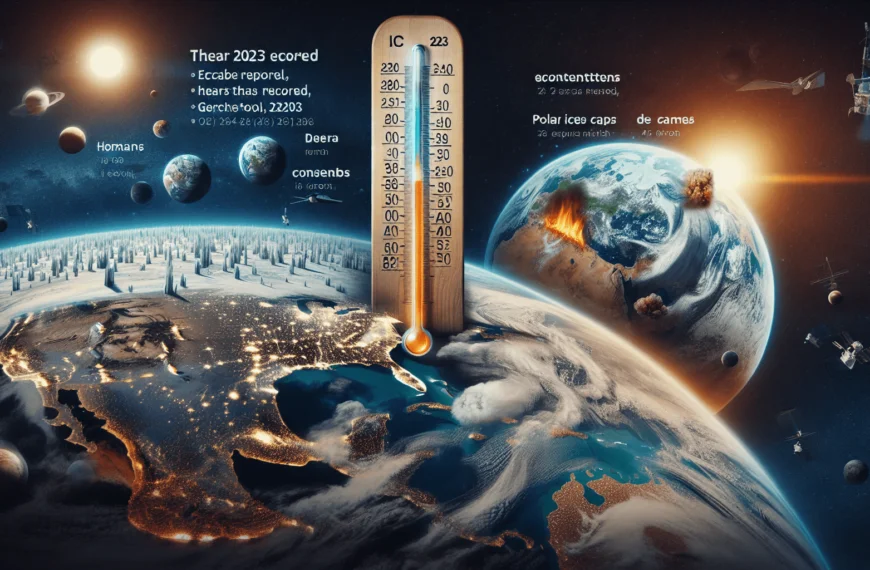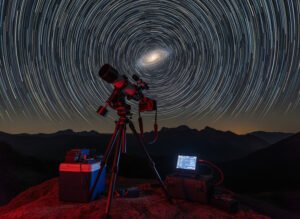The search for extraterrestrial intelligence (SETI) has captivated the human imagination for decades. The idea that we are not alone in the universe, that there may be other intelligent beings out there, is both thrilling and humbling. SETI is the scientific endeavor to detect and communicate with these potential extraterrestrial civilizations. It involves a combination of radio astronomy, signal processing, and the search for technosignatures – signs of advanced technology that may indicate the presence of intelligent life.
Key Takeaways
- SETI is the search for extraterrestrial intelligence, which involves looking for signs of life beyond Earth.
- Detecting extraterrestrial signals is challenging due to the vast distances involved and the need to distinguish between natural and artificial signals.
- Radio astronomy plays a key role in the search for ET, as radio waves can travel long distances through space and can be used to detect potential technosignatures.
- Listening for technosignatures, or signals that suggest the presence of technology, is important in the search for ET.
- Messaging extraterrestrial intelligence raises ethical questions, such as whether we should be broadcasting our presence to potentially hostile civilizations.
The Search for Extraterrestrial Intelligence (SETI)
SETI can be defined as the scientific search for evidence of extraterrestrial civilizations through the detection and analysis of electromagnetic signals. The idea of searching for intelligent life beyond Earth has been around for centuries, but it wasn’t until the mid-20th century that scientists began to seriously consider the possibility and develop methods to detect and communicate with extraterrestrial civilizations.
In 1960, astronomer Frank Drake conducted the first modern SETI experiment known as Project Ozma. Using a radio telescope, he listened for signals from two nearby stars, Tau Ceti and Epsilon Eridani. Although no signals were detected, this experiment laid the foundation for future SETI research.
The Challenges of Detecting Extraterrestrial Signals
Detecting extraterrestrial signals is no easy task. There are several challenges that scientists face in their search for intelligent life beyond Earth. One of the biggest challenges is the vast distances involved. Even if there are other civilizations out there, they may be located light-years away from us. This means that any signals they emit would take a significant amount of time to reach us, making communication difficult.
Another challenge is the strength of the signals. Radio waves emitted by extraterrestrial civilizations would likely be very weak by the time they reach us, making them difficult to detect amidst the background noise of the universe. Scientists must develop sophisticated signal processing techniques to filter out noise and identify potential signals.
Interference is also a major challenge. Earth is a noisy place, with countless radio signals being emitted by our own technology. These signals can interfere with the detection of extraterrestrial signals, making it even more difficult to distinguish between natural and artificial signals.
The Role of Radio Astronomy in the Search for ET
Radio astronomy plays a crucial role in the search for extraterrestrial intelligence. Radio telescopes are used to detect and analyze electromagnetic signals from space. These telescopes are designed to pick up radio waves, which are a form of electromagnetic radiation that can travel vast distances through space.
The Allen Telescope Array (ATA) is one of the most important tools in the search for ET. Located in California, the ATA is a collection of 42 radio telescopes that work together to scan the sky for potential signals. It is capable of surveying large areas of the sky and detecting weak signals that may indicate the presence of extraterrestrial civilizations.
The Importance of Listening for Technosignatures
Technosignatures are signs of advanced technology that may indicate the presence of intelligent life. These signs can take many forms, such as radio signals, laser beams, or even artificial structures in space. Detecting technosignatures is an important part of SETI research because they provide direct evidence of intelligent life beyond Earth.
There have been several examples of potential technosignatures detected in the past. One famous example is the Wow! signal, which was detected in 1977 by the Big Ear radio telescope at Ohio State University. The signal lasted for 72 seconds and had a frequency characteristic of an artificial source. However, despite extensive searches, the signal has never been detected again.
Technosignatures are important because they can provide insights into the technological capabilities and intentions of extraterrestrial civilizations. By studying these signals, scientists can learn more about the nature of intelligent life in the universe and potentially establish communication with other civilizations.
The Ethics of Messaging Extraterrestrial Intelligence

One of the most debated topics in the field of SETI is whether or not we should actively attempt to communicate with extraterrestrial intelligence. There are arguments both for and against messaging ET.
Proponents of messaging argue that it is our duty as intelligent beings to reach out and make contact with other civilizations. They believe that by initiating communication, we can learn from each other and potentially benefit from the knowledge and technology of more advanced civilizations.
On the other hand, opponents of messaging argue that it is too risky to actively broadcast our presence to the universe. They fear that contacting extraterrestrial civilizations could have unintended consequences, such as attracting the attention of hostile or malevolent beings. They also worry about the potential impact on our own society and culture if we were to receive a message from an advanced civilization.
To address these concerns, SETI has developed a set of protocols known as the “Declaration of Principles Concerning Activities Following the Detection of Extraterrestrial Intelligence.” These protocols outline a cautious approach to messaging ET, emphasizing the need for international cooperation and consultation before any messages are sent.
The Challenges of Interpreting Extraterrestrial Messages
Even if we are able to detect and receive messages from extraterrestrial civilizations, there are significant challenges in interpreting these messages. One major challenge is the problem of language. We have no way of knowing what language an extraterrestrial civilization might use, or if they even use language at all. Communicating with beings that have a completely different form of communication could be extremely difficult.
Another challenge is the problem of context. Without any prior knowledge or shared experiences, it would be difficult to understand the meaning behind extraterrestrial messages. Concepts and symbols that are familiar to us may have completely different meanings for another civilization. Deciphering the context of these messages would require a deep understanding of the extraterrestrial culture and their way of thinking.
The Role of Artificial Intelligence in Communicating with ET
Artificial intelligence (AI) has the potential to play a crucial role in communicating with extraterrestrial intelligence. AI algorithms can be trained to analyze and interpret complex signals, helping scientists decipher the meaning behind extraterrestrial messages.
AI can also assist in developing universal communication protocols that can be understood by any intelligent civilization. By analyzing patterns and structures in the messages received, AI algorithms can help identify commonalities and establish a common language for communication.
However, developing AI for SETI is not without its challenges. AI algorithms need to be trained on a vast amount of data, which may not be readily available for extraterrestrial messages. Additionally, there is the risk of bias in AI interpretation, as human programmers may unintentionally introduce their own biases into the algorithms.
The Potential for Interstellar Travel and Communication
While detecting and communicating with extraterrestrial civilizations is challenging, there is also the possibility of interstellar travel and communication. Advances in technology and our understanding of physics may one day allow us to travel to other star systems and establish direct contact with other civilizations.
However, interstellar travel is currently beyond our technological capabilities. The vast distances involved and the limitations imposed by the laws of physics make it extremely difficult to reach other star systems within a reasonable timeframe. Scientists are exploring concepts such as warp drives and wormholes that could potentially overcome these limitations, but much more research is needed before interstellar travel becomes a reality.
The Implications of Discovering Extraterrestrial Intelligence
The discovery of extraterrestrial intelligence would have profound implications for society, science, and technology. It would fundamentally change our understanding of our place in the universe and our relationship with other intelligent beings.
From a societal perspective, the discovery of extraterrestrial intelligence could have both positive and negative impacts. On one hand, it could unite humanity and foster a sense of global cooperation and collaboration. On the other hand, it could also lead to fear and uncertainty, as we grapple with the implications of sharing the universe with other intelligent beings.
From a scientific and technological perspective, the discovery of extraterrestrial intelligence would revolutionize our understanding of biology, physics, and technology. It would provide us with new insights into the origins and evolution of life, as well as the potential for advanced technologies that we can only dream of.
The Future of SETI Research and Exploration
The field of SETI research is constantly evolving, with new technologies and techniques being developed to improve our chances of detecting and communicating with extraterrestrial civilizations. The current state of SETI research is focused on refining our search methods and expanding our capabilities.
In terms of technology, there are several exciting developments on the horizon. The next generation of radio telescopes, such as the Square Kilometer Array (SKA), will have unprecedented sensitivity and resolution, allowing us to detect even fainter signals from space. Advances in AI and machine learning will also play a crucial role in analyzing and interpreting these signals.
The search for extraterrestrial intelligence is a fascinating and complex field that combines science, technology, and philosophy. While the discovery of intelligent life beyond Earth remains elusive, scientists are making significant progress in their search for technosignatures and developing new methods to detect and communicate with extraterrestrial civilizations.
The search for extraterrestrial intelligence raises profound questions about our place in the universe and our relationship with other intelligent beings. It challenges us to think beyond our own planet and consider the possibility of a vast and diverse cosmos teeming with life.
As we continue to explore the mysteries of the universe, the search for extraterrestrial intelligence will undoubtedly remain a central focus of scientific inquiry. Whether we find evidence of intelligent life or not, the search itself is a testament to our curiosity, imagination, and desire to understand the universe in which we live.
If you’re fascinated by the possibility of detecting or communicating with extraterrestrial intelligence, you’ll definitely want to check out “The Universe Episodes.” This website is a treasure trove of information about the mysteries of the universe and our place in it. One article that caught my attention is their piece on “The Search for Extraterrestrial Intelligence (SETI).” It delves into the various methods scientists are using to detect potential signals from alien civilizations and explores the challenges and possibilities of communicating with beings from other worlds. To learn more about this intriguing topic, visit The Universe Episodes.
























